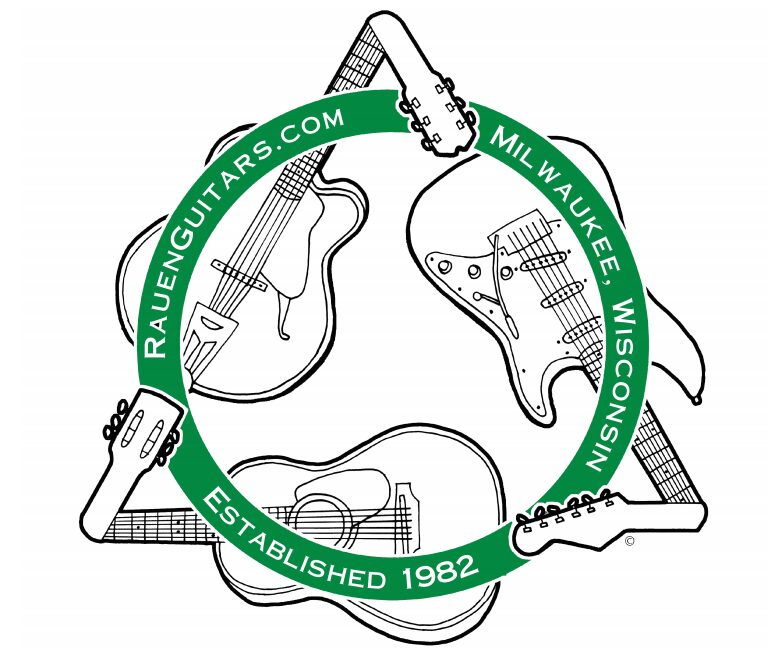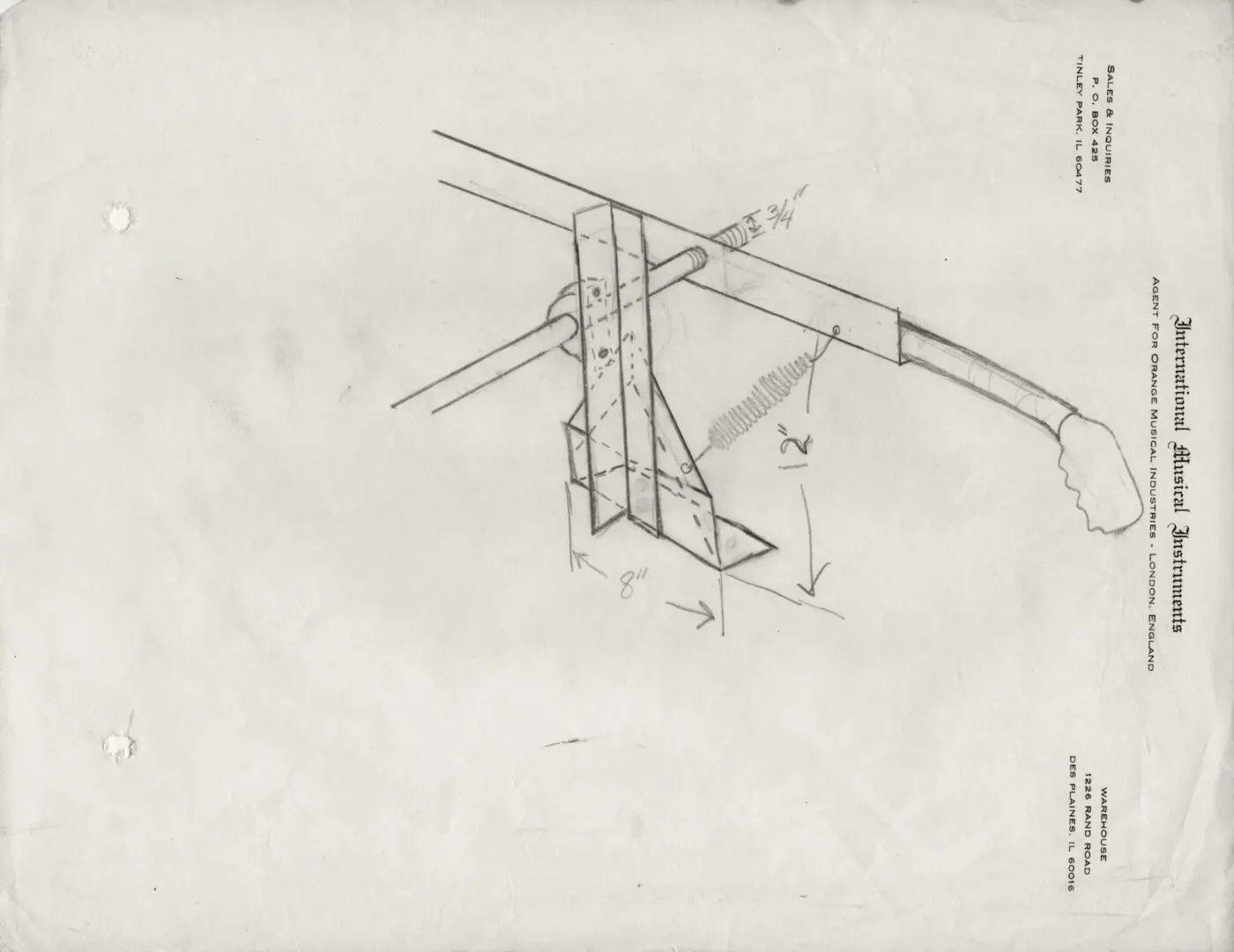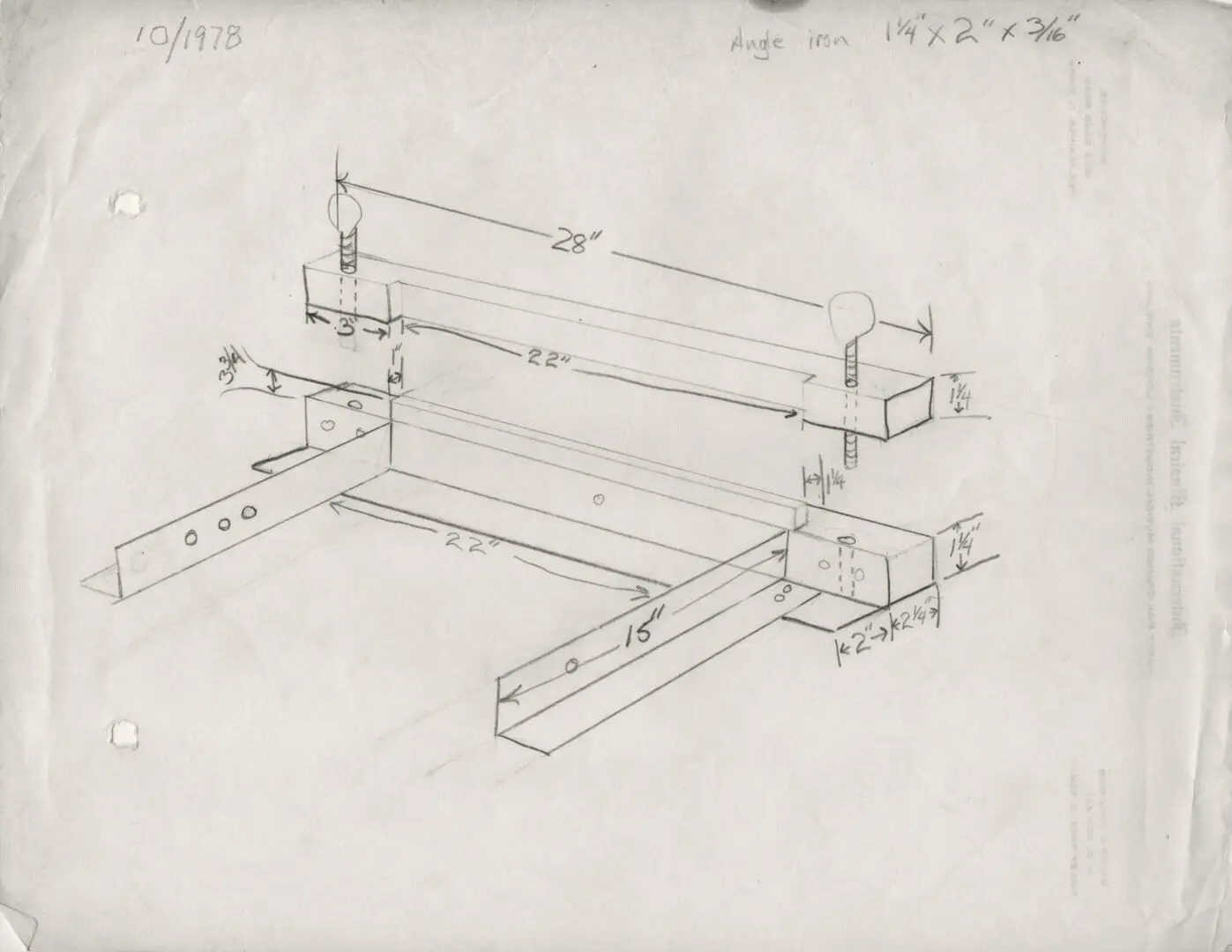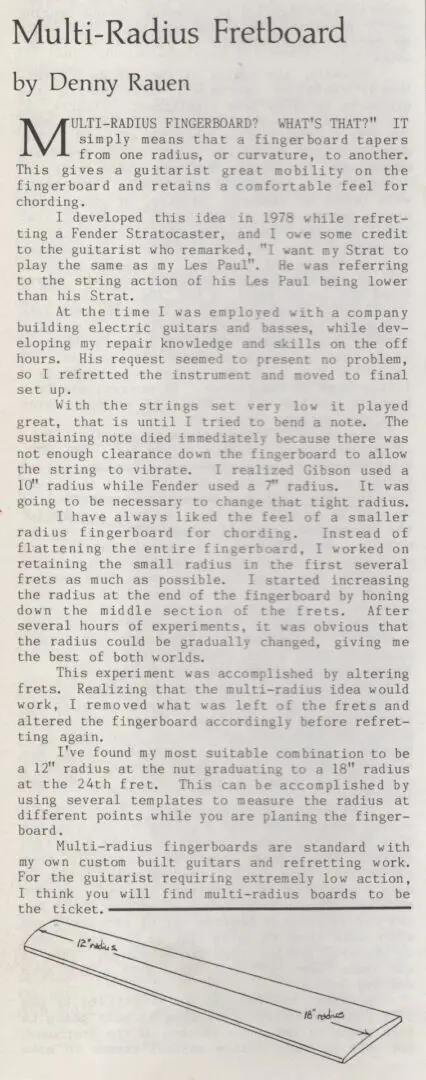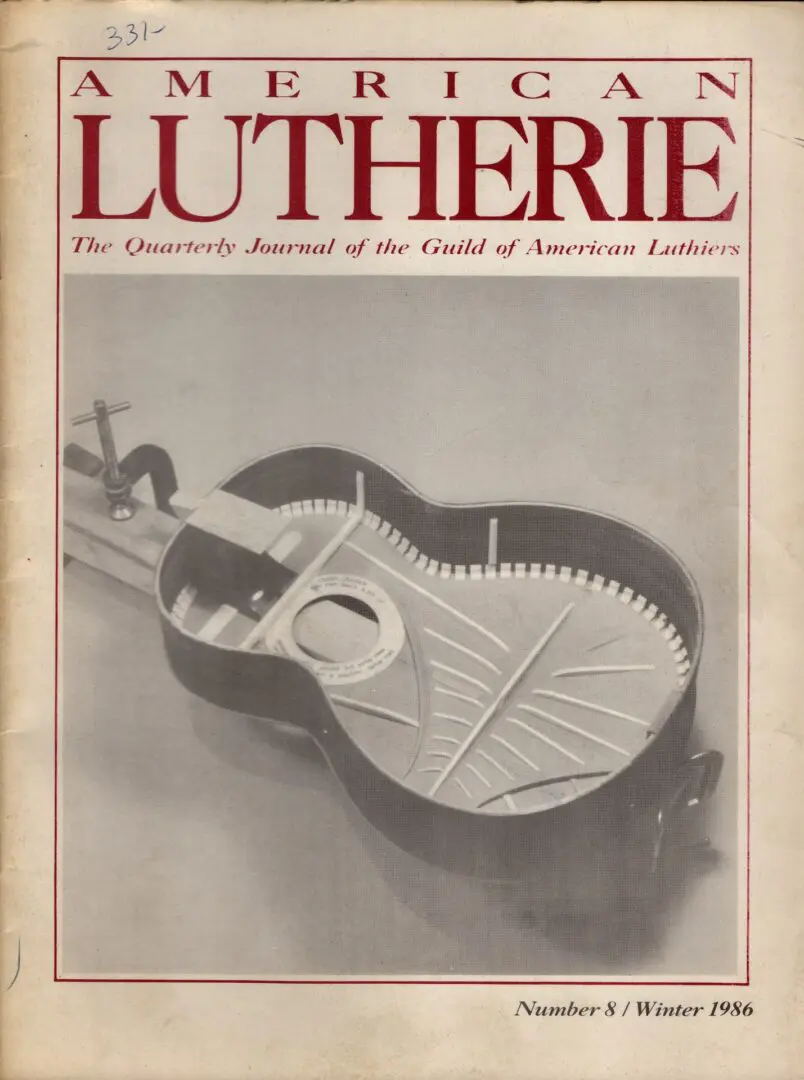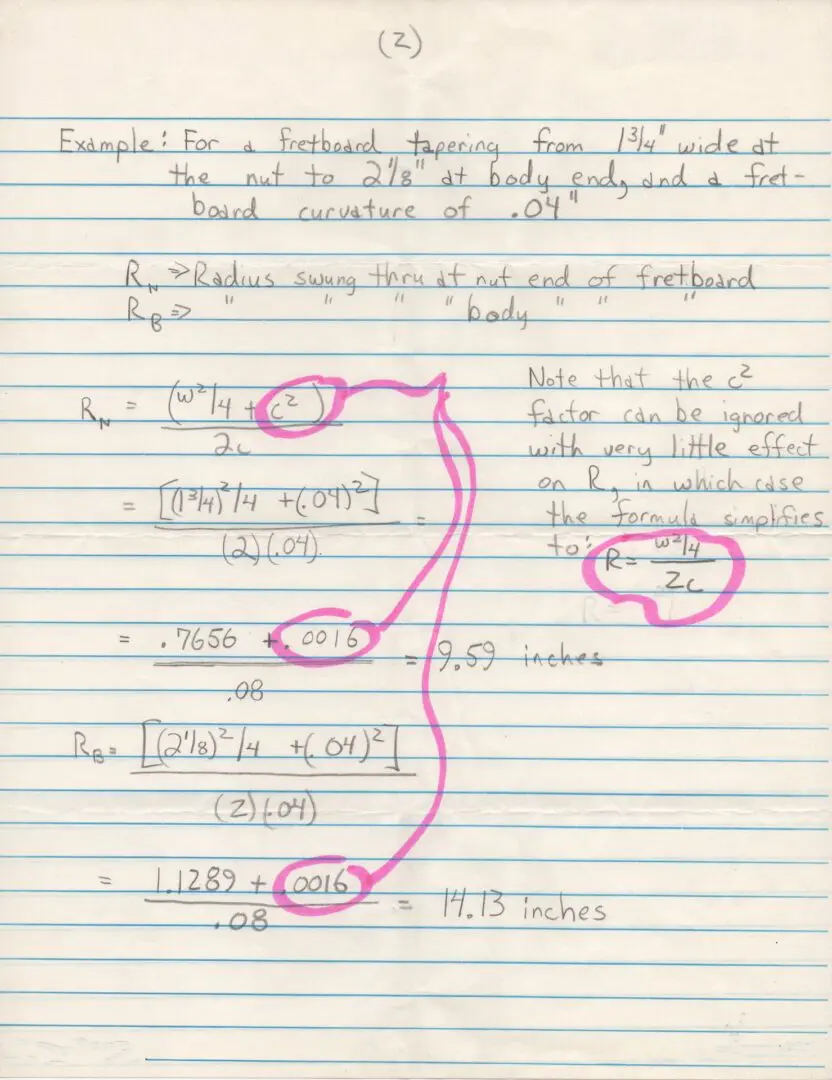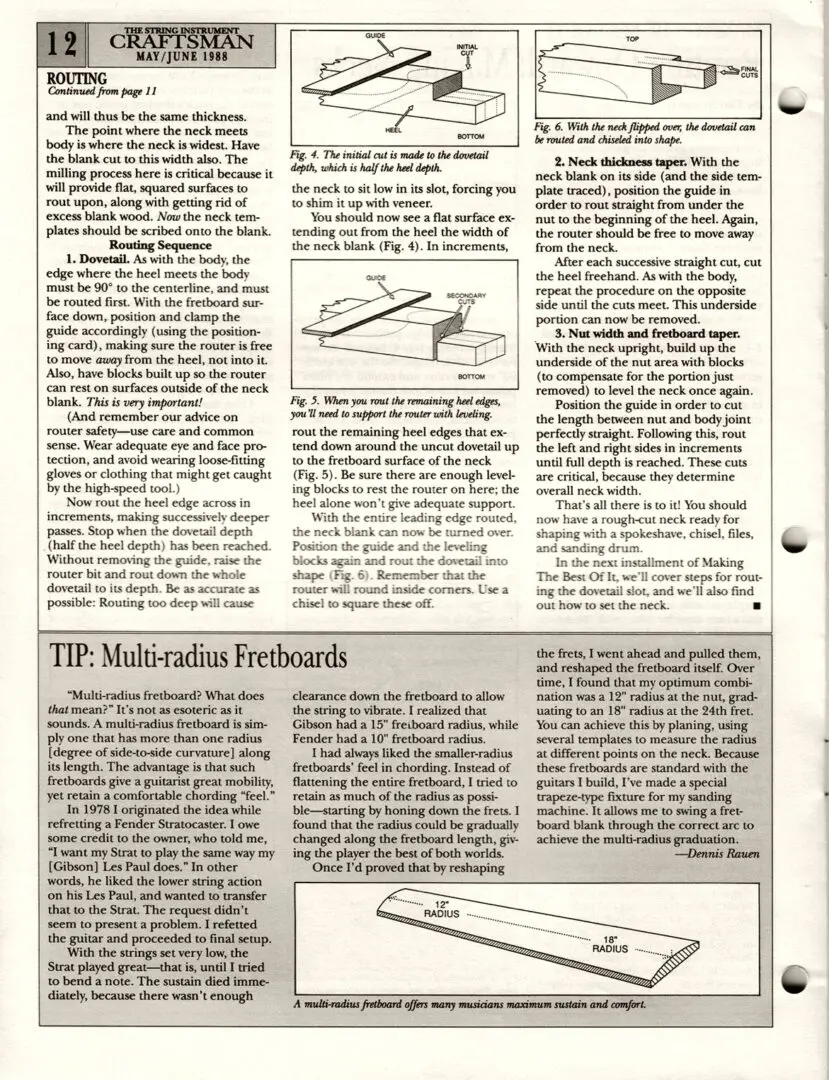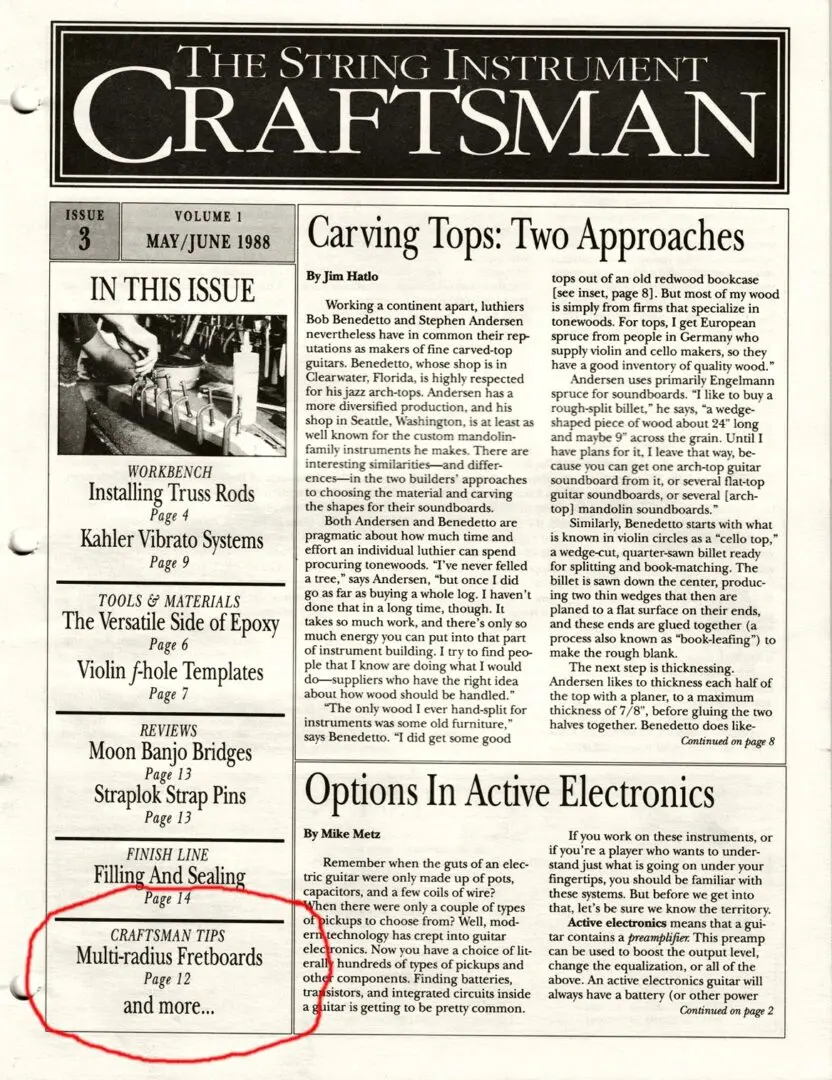MULTI-RADIUS/COMPOUND RADIUS FRETBOARDS {original article}
"Multi-radius fretboard" or more commonly known today as "Compound Radius" what does that mean? It's not as esoteric as it sounds. A multi-radius fretboard is simply one that has more than one radius along its length. Picture a section cut out of a cone shape. The advantage is that such fingerboards give a guitarist great mobility for string bending and yet retain a comfortable feel for chording.
In 1978 I created this idea while refretting a Fender Stratocaster. I owe some credit to the owner, who told me, "I want my Strat to play the same as my (Gibson) Les Paul does." In other words, he liked the lower string action on his Les Paul, and wanted to transfer that to the Strat. The request didn't seem to present a problem. I refretted the guitar and proceeded to final setup.
With the strings set very low, same as Les Paul, the Strat played great-that is until I tried to bend a note. The note died immediately because there wasn't enough clearance down the fingerboard to allow the string to vibrate. I realized the Gibson had a 12" radius while the Fender had a 7.25" radius. I had always liked the smaller-radius fretboards' feel for chording. Instead of just making the entire fingerboard flatter (larger radius) I tried to retain as much of the small radius as possible and honed down the frets gradually up the fingerboard toward the 21st fret. I found that the radius could be gradually changed along the fretboard length, giving the player the best of both worlds.
Once I had proved this by reshaping the frets, I went ahead and pulled the frets and reshaped the fretboard and refretted the Strat again. Over time, I found that my optimum conical radius combination was 10" at the nut graduating to 15" radius at the 21st fret. You can achieve this by hand planing, using several templates to measure the radius at different points along the fingerboard. Because these fretboards are standard with the guitars I build, I've made a special trapeze-type fixture for my fingerboard shaping machine. It allows me to swing a fretboard blank through the correct arc to achieve the perfect multi-radius graduation.
COMMENTARY {by Denny Rauen about inventing Multi-Radius fretboards}
While doing a little research I came across a few blogs discussing my creation and realized that others will read these various undocumented and misleading comments about conical fingerboards. I feel a need to give a few words on my behalf as the generalizations about my conical fingerboard are overwhelming. As stated earlier my idea was originally published in American Lutherie and String Instrument Craftsman. For those interested in historical proof the following few paragraphs will help with the timeline and how my idea clearly went viral after I published it for all to use in the mid 1980's.
Fact, the "Multi-Radius Fretboard" (conical fretboard) was the result of my hard work and guitar players need for bending notes with a very light action while avoiding choking out. No more compliclicated than that and I still remember creating this fretboard like it was yesterday. Prior to publishing "Multi-Radius Fretboard" there was no literature I had seen explaining that a guitar maker, violin maker or string instrument craftsman of any kind used a conical shaped fingerboard or that they had created one for any specific purpose let alone for the purpose of bending notes. If there were fingerboards made to alleviate this problem 200 years ago or even in 1977 I was not aware of this nor am I aware of it to this day.
For the record I was designer and production manager for two guitar companies in the 1970's: Dean Guitars and SD Curlee. Several times a year I had the good fortune of hanging out with some of the finest guitar makers in the world. This included companies that specialized in making fingerboards for string instrument companies around the world and yet not a single conical fretboard was available nor was there a word printed in any guitar company brochures or even small talk in the evenings out with fellow luthiers. At the very least you'd think if this idea was known before 1978 some individual or guitar company somewhere on the planet would have mentioned it or offered it as an option?
A cone is a three dimensional geometric shape and has been utilized in many ways for thousands of years. What's unique is that I invented a fingerboard using the cone shape to solve a specific problem guitarist were having when bending notes. I agree its a simple and obvious idea now that its out there. Intermittent wipers and round wheels are pretty obvious as well but someone still had to invent them.
To date I haven't made one penny in royalties or licensing from my invention but would appreciate the proper credit for creating and publishing it. Whether you use the term compound radius, multi-radius or conical fingerboard it is the result of my discovery in 1978. You may wonder why I do not hold a patent? Why did I choose to share my idea allowing everyone to use it for free? This is a fair question. The short answer is that after several years of careful thought, research and limited funds I made the decision to publish and share Multi-Radius Fretboards. To this day I’m proud I took this path. Like many before me sharing ideas is common place in the art of lutherie. My long professional life in the world of string instruments is wonderful and having shared my creation so luthiers around the world can freely use it (which they all do) is my small gift to the luthier community and worth more than anything money can buy.
